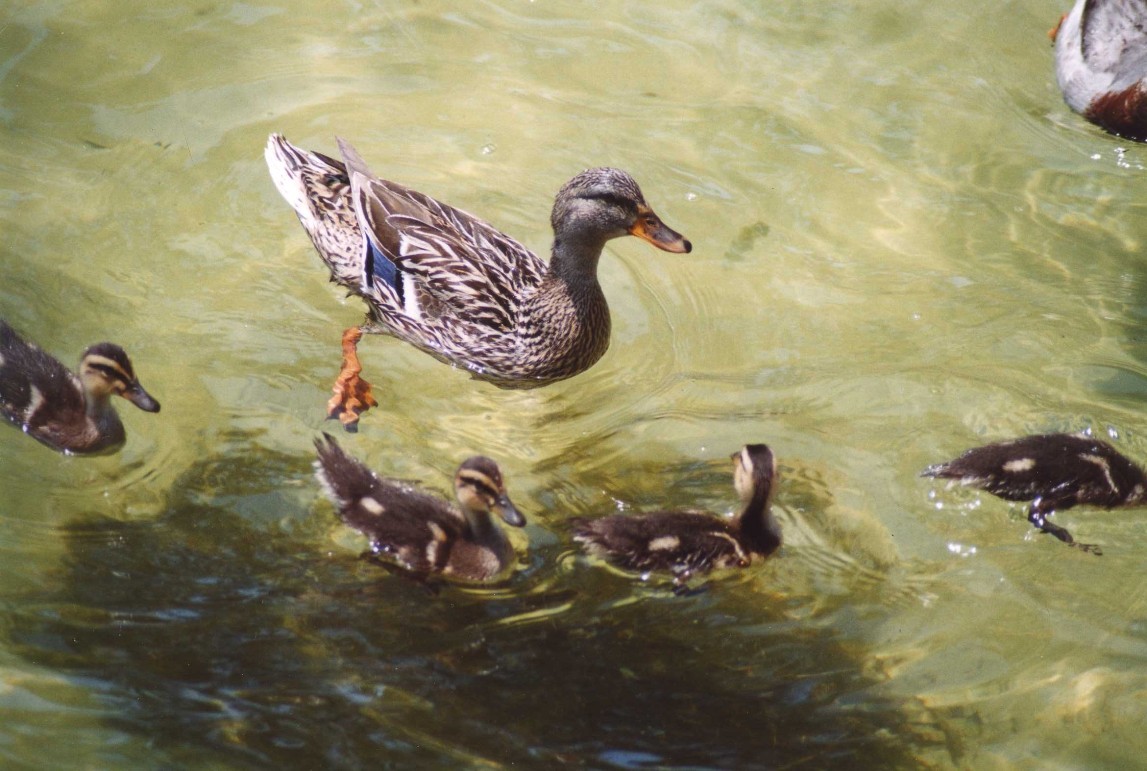 |
| Domestic Female Mallard |
What is wrong with this photo? In the picture is a female duck with young that was photographed during the summer at Kingsley Lake, six miles east of Starke, Florida. The female duck is a mallard, which is discernable by the blue patch on the outer wing. The problem is that the above duck is not a wild mallard. Wild mallards migrate northward during the summer, but domestic mallards that are hatched in captivity do not migrate northward, which within itself is not the problem. The problem is that the domestic mallard is romantically attracted to the genetically similar and native Florida Mottled Duck. They will mate with the mottled duck and produce fertile hybrid offspring. The mottled duck is a reproductively less aggressive duck with a limited and restricted population; consequently, the Florida Fish and Wildlife Conservation Commission (FWC) is concerned that the mottled duck could easily become genetically extinct if the status quo is not reversed.
Further complicating the situation is the fact that the mallard
and mottled ducks can be easily confused. Its dark green head distinctly
marks the male mallard. The female mallard and the male and female mottled
ducks are quite similar. The blue patch on its outer wing, as illustrated
above, easily distinguishes the female mallard. The female mottled duck
also has a much lighter head than the mallard. The easiest way to
distinguish between the female mallards and female mottled ducks is to observe
them during the summer. Remember that the wild mallards will migrate
northward, leaving only the domestic mallards behind.
Also confusing when reading about the issues the fact that
domestic mallards are frequently referred to as feral mallards or residential
mallards.
To address this issue, the FWC provides control permits to any
Floridian interested in trapping, euthanizing or humanly killing the nuisance
ducks. The permit will allow the recipient to take up to 12,000 domestic
mallards and destroy up to 6,000 mallard nests yearly. Conditions of the
permits -- which are not described in detail here -- must be closely adhered
to.
No comments:
Post a Comment